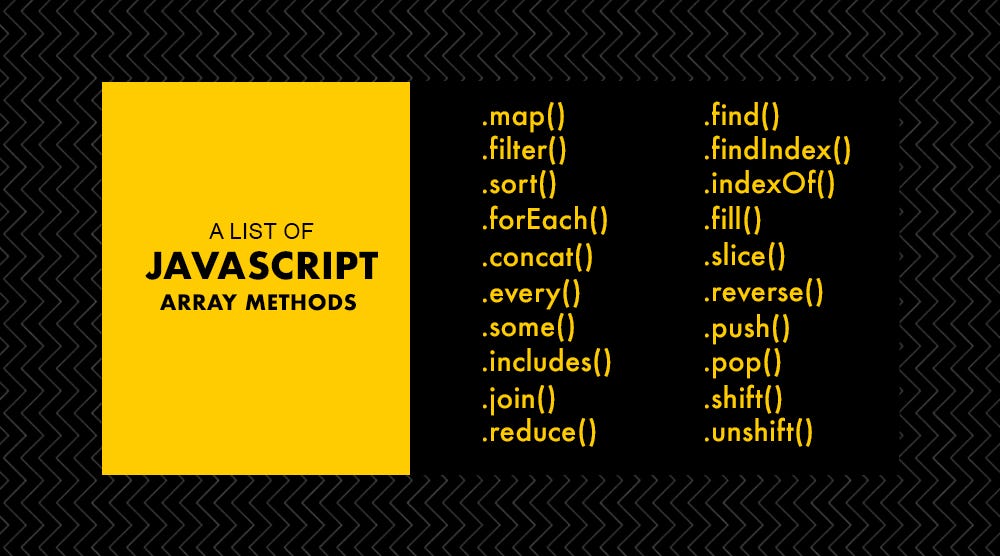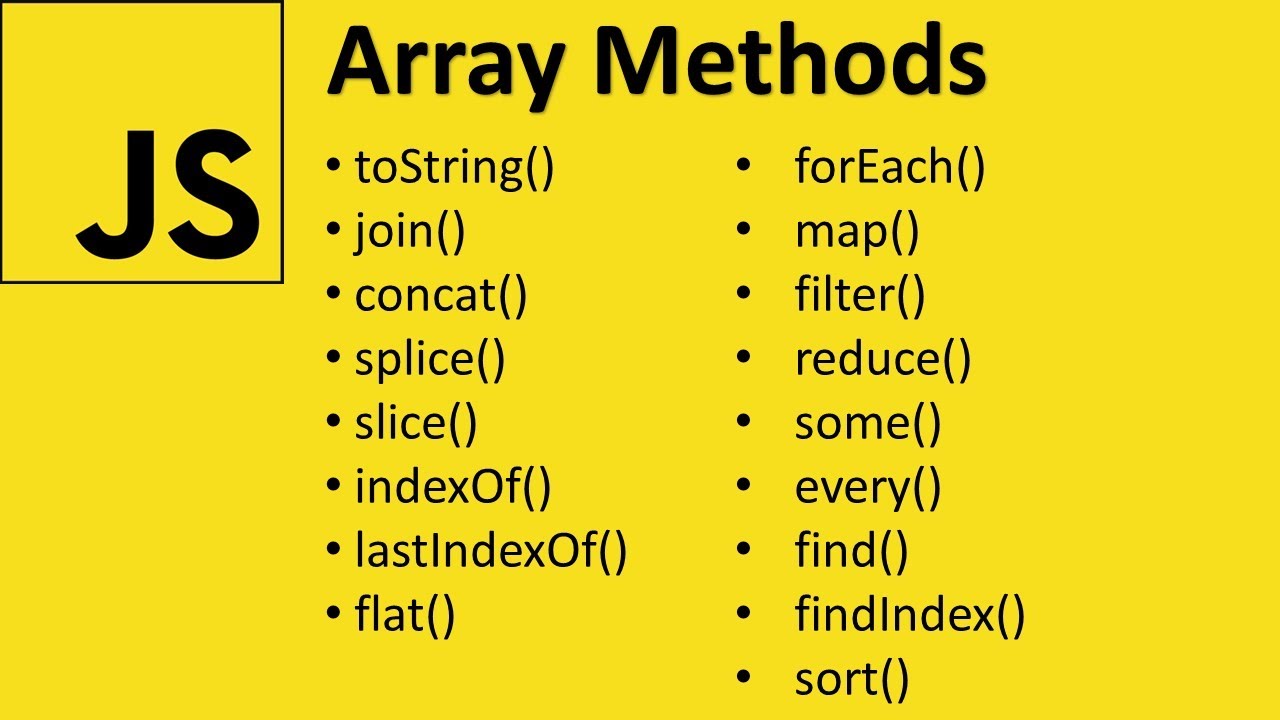How many types of array methods are there in JavaScript?
How many types of array methods are there in JavaScript?

There are several array methods in JavaScript that allow you to perform various operations on arrays. Here's a list of the most commonly used array methods:
forEach(): This method calls a provided callback function once for each element in the array, in order. It is often used when you need to iterate over an array and perform some action on each element.Example:

let numbers = [1, 2, 3, 4, 5];
numbers.forEach((num) => console.log(num));
Example:
let numbers = [1, 2, 3, 4, 5];
let doubledNumbers = numbers.map((num) => num * 2);
console.log(doubledNumbers); // Output: [2, 4, 6, 8, 10]
Example:
let numbers = [1, 2, 3, 4, 5];
let evenNumbers = numbers.filter((num) => num % 2 === 0);
console.log(evenNumbers); // Output: [2, 4]
Example:
let numbers = [1, 2, 3, 4, 5];
let sum = numbers.reduce((acc, current) => acc + current, 0);
console.log(sum); // Output: 15
Example:
let numbers = [1, 2, 3, 4, 5];
let isEveryNumberPositive = numbers.every((num) => num > 0);
console.log(isEveryNumberPositive); // Output: true
Example:
let numbers = [1, 2, 3, 4, 5];
let isSomeNumberEven = numbers.some((num) => num % 2 === 0);
console.log(isSomeNumberEven); // Output: true
Example:
let names = ['John', 'Paul', 'George', 'Ringo'];
let ringoIndex = names.indexOf('Ringo');
console.log(ringoIndex); // Output: 3
Example:
let names = ['John', 'Paul', 'George', 'Ringo'];
let ringoLastIndex = names.lastIndexOf('Ringo');
console.log(ringoLastIndex); // Output: 3
Example:
let numbers = [1, 2, 3];
numbers.push(4);
console.log(numbers); // Output: [1, 2, 3, 4]
Example:
let numbers = [1, 2, 3];
let removedElement = numbers.pop();
console.log(removedElement); // Output: 3
Example:
let numbers = [1, 2, 3];
let removedElement = numbers.shift();
console.log(removedElement); // Output: 1
Example:
let numbers = [2, 3];
numbers.unshift(1);
console.log(numbers); // Output: [1, 2, 3]
Example:
let numbers = [4, 2, 5, 1];
numbers.sort((a, b) => a - b);
console.log(numbers); // Output: [1, 2, 4, 5]
Example:
let numbers = [1, 2, 3];
numbers.splice(1, 0, 4);
console.log(numbers); // Output: [1, 4, 2, 3]
Example:
let numbers = [1, 2, 3];
let joinedString = numbers.join('-');
console.log(joinedString); // Output: '1-2-3'
Example:
let numbers = [1, 2, 3];
numbers.reverse();
console.log(numbers); // Output: [3, 2, 1]
Example:
let numbers1 = [1, 2, 3];
let numbers2 = [4, 5, 6];
let combinedNumbers = numbers1.concat(numbers2);
console.log(combinedNumbers); // Output: [1, 2, 3, 4, 5, 6]
These are some of the most commonly used array methods in JavaScript. They can help you perform various operations on arrays and make your coding life easier!
Array syntax in Java
I'd be happy to help! However, please note that I'll respond in English as per your request.
Array Syntax in Java:
In Java, arrays are a type of data structure that stores multiple values of the same data type in a single variable. The basic syntax for declaring an array in Java is:
type[] arrayName = new type[numberOfElements];
Here's a breakdown of the parts:
type: This specifies the data type of the elements in the array, such as int, double, String, etc. []: These are the brackets that indicate it's an array. You can think of them as a box that holds multiple values. arrayName: This is the name you give to the array variable. new type[numberOfElements]: This creates a new array with the specified number of elements.
For example, let's say we want to declare an integer array called ages with 5 elements:
int[] ages = new int[5];
When we create an array in Java, we need to specify its size (the number of elements it can hold) when declaring the array. We can also initialize the array with values using the following syntax:
type[] arrayName = {value1, value2, ..., valueN};
Here's an example of creating a string array called colors with some initial values:
String[] colors = {"Red", "Green", "Blue", "Yellow", "Purple"};
Once we've created an array, we can access its elements using indexing. In Java, the index starts from 0, so the first element is at index 0.
For example, let's say we have the following integer array:
int[] scores = {90, 85, 95, 80};
To get the value of the second element (which corresponds to index 1), we can use the following syntax:
int secondScore = scores[1];
This would return the value 85.
Arrays in Java are a powerful feature that allows us to work with multiple values of the same type. We can perform various operations on arrays, such as iterating over their elements, searching for specific values, and modifying their contents.
In conclusion, understanding array syntax in Java is essential for any Java programmer. By mastering the basics of array declaration, initialization, and indexing, you'll be able to create and manipulate arrays with ease!





























